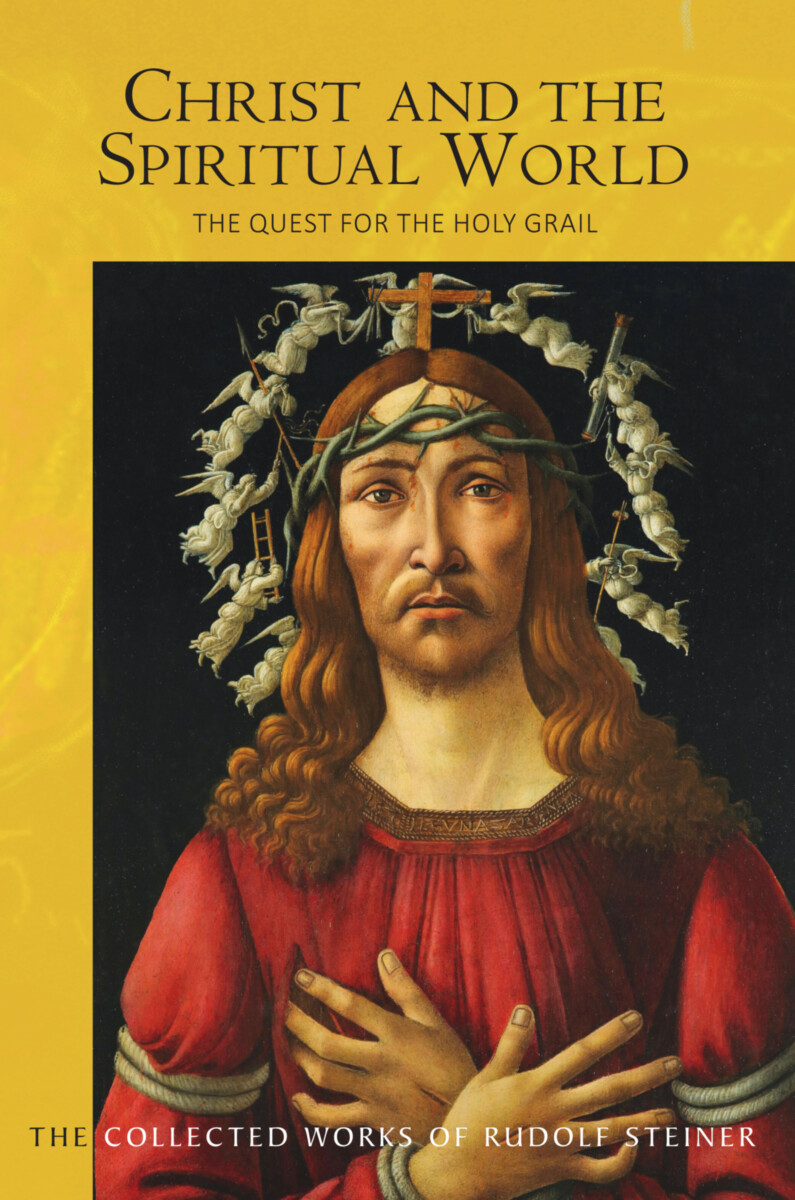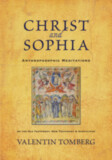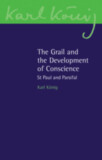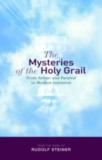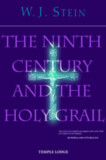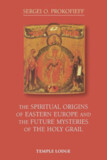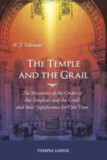Christ and the Spiritual World
The Quest for the Holy Grail (CW 149)
Introduction by Frederick Amrine
Revised by Frederick Amrine
Translated by Charles Davy
Contributions by Margot Amrine
- Publisher
Rudolf Steiner Press - Published
31st January 2023 - ISBN 9781855846050
- Language English
- Pages 176 pp.
- Size 6" x 9.25"
6 lectures, Leipzig, December 28, 1913 – January 2, 1914 (CW 149).
“Rudolf Steiner begins this cycle of lectures with a disconcerting promise not to provide answers, but rather to make us ‘disturbingly aware of how contradictions, difficulties, must pile up before the soul of anyone who wants to accept, in the right sense, our anthroposophical knowledge concerning humanity in the evolution of the world.’ It seems that to be an anthroposophist implies not the comfortable possession of some set of truths, but rather incessant wrestling with difficulties and outright contradictions.” — Frederick Amrine (introduction)
Reassessing human history in relation to the cosmic and earthly events of Christ’s incarnation, Rudolf Steiner stresses the significance of Gnostic spirituality and legends of the Holy Grail. He tells us that the Christ impulse “is not a one-time event but a continuous process, beginning well before Jesus of Nazareth walked the earth.” The Christ impulse is a force that gives impetus to human development, such as the extraordinary flowering of free thinking during the past two millennia.
“Now from the outset I would like to say that when in these lectures I speak of the Mystery of Golgotha, I do not wish to invest this term with any coloring drawn from religious traditions or convictions. We shall be concerned purely with objective facts that are fundamental to human evolution, and with what physical and spiritual observation can bring to light. I shall leave aside everything that individual religious creeds have to say about the Mystery of Golgotha and shall look only at what has happened in the course of human evolution. I shall have to say many things which will be made clear and substantiated later on.” — Rudolf Steiner (lecture 1)
Surveying this pattern of evolving human thought, Steiner explains the roles of historical figures such as the great teacher Zarathustra, Joan of Arc, and Johannes Kepler. We are shown the widespread influence of the sibyls, the clairvoyant prophets who formed a backdrop to the Greco-Roman world. Steiner contrasts their revelations to those of the Hebrew prophets.
The lectures culminate in the secret background of the Parsifal narrative. Steiner illustrates how it is possible to experience the Holy Grail by reading the starry script at Eastertime. He also provides a rare personal account of the processes he uses to conduct esoteric research.
This new edition features a revised translation and an introduction, appendices, and notes by Frederick Amrine.
Christ and the Spiritual World is a translation from German of Christus und die geistigen Welt. Von der Suche nach dem heiligen Gral (GA 149). Cover image: L’uomo dei dolori (The Man of Sorrows), aka Cristo dei dolori (Christ of Sorrows), c.1500–1510, by Sandro Botticelli (1445–1510), tempera and oil on panel (private collection)
CONTENTS & LECTURE SYNOPSES:
Introduction by Fredrick Amrine
1. Great change in the life of the human soul in the centuries before and after the Mystery of Golgotha. Deepening of thought life through Greek philosophy. At that time there was no possibility of understanding the Mystery of Golgotha. The same high spiritual power caused both the deepening of thought life and the Christ impulse. The theology of Paul. The Gnostic concepts.
2. Lack of understanding of Gnostics for the connection of the Christ being with Jesus of Nazareth. Ancient Indian rishis, disciples of Zarathustra, and Chaldean sages could have understood the Christ appearance. Gold, frankincense, myrrh. Christ enters the Earth in the age least suited to understanding him. Theological scholarship moved increasingly furth from understanding Christ. The sibyls. Michelangelo’s prophets and sibyls. Sibyls, remnants of ancient wisdom destroyed by the Christ impulse. Paul, descendant of the ancient prophets. Paul and the world of the olive tree.
3. The tow Jesus boys. Human soul development in the course of Earth evolution. The threefold influence of the spiritual nature of the Nathan Jesus boy on sense development, the life organs, and the soul development of humankind (thinking, feeling, willing). St. George defeats the dragon. The musical arts (Apollo) as a reflection of these harmonizing forces. The myths of Midas and Marsyas. The “beatification” of the Christ in Apollo.
4. The after-effects of the triple Christ event in the post-Atlantean period. Zarathustra. Ahura Mazda, Ahriman, Zurvan Akarana. Amshaspands, Izeds. Egyptian and Chaldean mysteries: Astrology. Greek mysteries: meteorology. Ancient Hebrew wisdom: geology. The prophets. Attis and Adonis cult as prefiguration of the Mystery of Golgotha. John the Baptist, reincarnation of Elijah. Apollo and the laurel; Paul and the olive tree.
5. The work of the Shrist impulse in the subsoils of the soul. Constantine’s victory over Maxentius. Parzival and the Grail. Michelangelo’s Pieta. Chétien de Troyes, Wolfram von Eschenbach. Kyot. The reappearance of the stellar script in the Mystery of Parzival. Ganganda greida, the journeying viaticum.
6. The Easter festival. The Christianization of spiritual revelations. Yahweh: the connection of the ruler of Earth with the Moon Mother. The Maid of Orleans as a modern, Christianized sibyl. The harmony of human history with the stellar script. Johannes Kepler. The heavenly aspect and the human aspect of the Grail. Prester John. “Ex oriente lux.”
Appendices:
1. The Etheric and the Astral Bodies
2. Platonism and Aristotelianism
3. Charles Darwin
4. Michelangelo and the Medici Tombs (by Margot Amrine)
5. Cosmic Evolution
6. The Hierarchies
7. Ahriman and Lucifer
8. Johann Wolfgang von Goethe
9. Ganganda greida
Rudolf Steiner’s Collected Works
Significant Events in the Life of Rudolf Steiner
Index
Rudolf Steiner
Rudolf Steiner (b. Rudolf Joseph Lorenz Steiner, 1861–1925) was born in the small village of Kraljevec, Austro-Hungarian Empire (now in Croatia), where he grew up. As a young man, he lived in Weimar and Berlin, where he became a well-published scientific, literary, and philosophical scholar, known especially for his work with Goethe’s scientific writings. Steiner termed his spiritual philosophy anthroposophy, meaning “wisdom of the human being.” As an exceptionally developed seer, he based his work on direct knowledge and perception of spiritual dimensions. He initiated a modern, universal “spiritual science” that is accessible to anyone willing to exercise clear and unbiased thinking. From his spiritual investigations, Steiner provided suggestions for the renewal of numerous activities, including education (general and for special needs), agriculture, medicine, economics, architecture, science, philosophy, Christianity, and the arts. There are currently thousands of schools, clinics, farms, and initiatives in other fields that involve practical work based on the principles Steiner developed. His many published works feature his research into the spiritual nature of human beings, the evolution of the world and humanity, and methods for personal development. He wrote some thirty books and delivered more than six thousand lectures throughout much of Europe. In 1924, Steiner founded the General Anthroposophical Society, which today has branches around the world.


